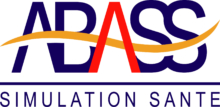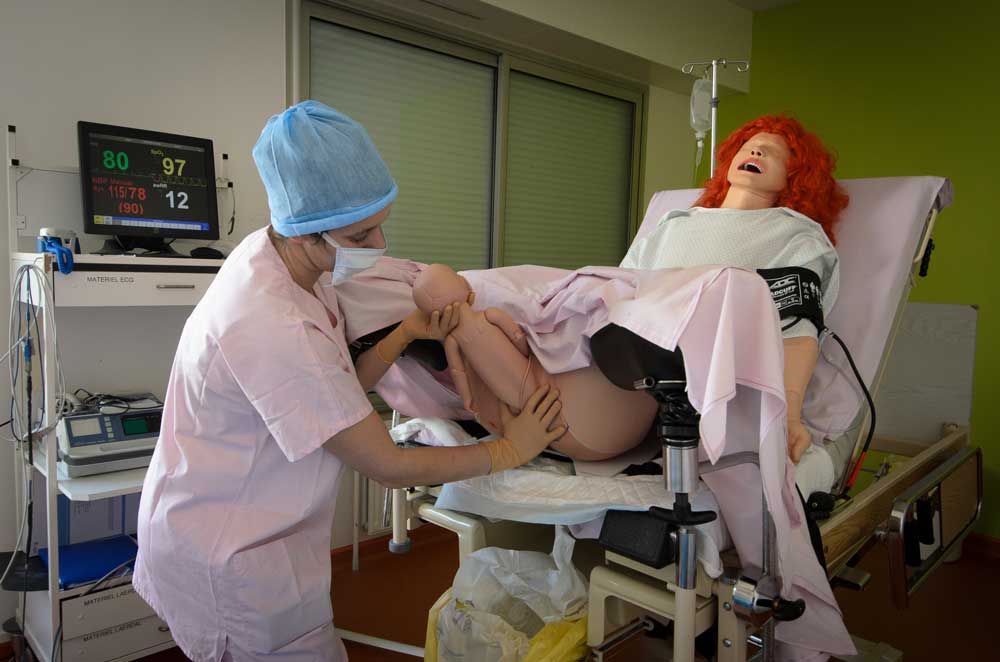Health simulation
Health simulation for the Haute Autorité de Santé (HAS) is an active teaching method based on experiential learning and reflective practice and aimed at all health professionals. “It corresponds to the use of equipment (mannequin, procedural simulator, etc.), virtual reality or a so-called standardized patient to reproduce situations or care environments, to teach diagnostic and therapeutic procedures and allow the repetition of processes, clinical situations or decision-making by a healthcare professional or a team of professionals. »
(HAS document “Guide to good practice in healthcare simulation”).
Simulation is associated with a constructivist approach to learning in which the learner is confronted with a problem situation that he must recognize, analyze and deal with by implementing corrective actions. This problem situation is the reproduction of a care situation that is as realistic as possible.
In this situation, the patient is represented by a high-fidelity mannequin, possessing anatomical and physiological potentialities close to reality, or by an actor. Thanks to a computer interface, the mannequin can speak, make noises, breathe, reproduce many clinical signs and respond to the care actions undertaken by the learners. The principle is to enable the learning of clinical reasoning, in a secure framework in which the right to error is accepted as being beneficial to the construction of knowledge. The patient can also be an actor, we then speak of a “standardized patient” who is trained to simulate the story of a real patient, by reproducing clinical signs, speech, emotional reactions that have been defined in the scenario. It gives the learner the opportunity to confront a realistic clinical situation by mobilizing his clinical judgment, his interpersonal skills, his interpersonal skills without harming a real patient.
The second principle of simulation is to promote learner immersion through the realism of the environment and the authenticity of the context.
Organization of a simulation session: From briefing to debriefing
The simulation programs are organized into sessions. At the end of each session, a debriefing is carried out and actions for improvement are proposed.
The simulation can take place either in a simulation center or by in situ simulation.
In all cases, the simulation programs are organized according to the rules of good practice defined by the HAS
A simulation session takes place according to a pre-established pattern and includes 3 distinct phases: briefing, simulation and debriefing.
– Briefing
The objective of this introduction is to create a favorable learning climate where the four essential principles of benevolence, the right to make mistakes, the confidentiality of exchanges and images and the playfulness of the activity are recalled. The educational objectives of the session and the theme of the simulated situation are announced as well as the work environment. This phase is crucial in the field of cognitive psychology because it avoids surprise effects for learners who have volunteered.
– The simulated situation
It lasts 10 to 15 minutes and takes place in an adapted environment favoring the immersion of the learner through the realism of the environment and the authenticity of the context. This is the time during which the learners, by mobilizing their previous knowledge, will solve problems in the care situation.
– The debriefing
The third phase, that of the debriefing, is considered as the central axis of the simulation session. This is the major time for learning and reflection thanks to feedback on the action of the learners. The debriefing is conducted by a trainer trained in simulation techniques, and lasts two to three times the time of the simulated action.
The debriefing has three stages:
A first which is the phase of learners’ reactions to the situation, in which they express their emotions, the aim being to relieve them of the role they played in the simulation. This removal of emotions is necessary before the analysis work because the simulation trainer guarantees the emotional security of the learners.
The second time, the analysis phase, is a time when the trainer will guide the reflection by focusing not on the finished product of the action to the performance but on the clinical reasoning and the cognitive process that led to the observed action.
Thus, the trainer must ensure that the debriefing relates to the reality of the activity, and not only to what has been achieved. The analysis must focus on what the learner did, what he did not do, what he could not or knew how to do, what he did not want to do, if the events that occurred during the simulation thwarted his activity, his choices.
The third phase of the debriefing is that of summarizing the points covered during the debriefing. This step is a key moment to reinforce learning and to come back to the important messages identified during the analysis phase. The trainer sets out the formulation of key messages but also of learning objectives aimed at promoting the transfer of knowledge developed in simulation towards their application in the professional environment.
Arnaud Barras, vice-president of ABASS.
Frédéric Lepetit, President of ABASS.




